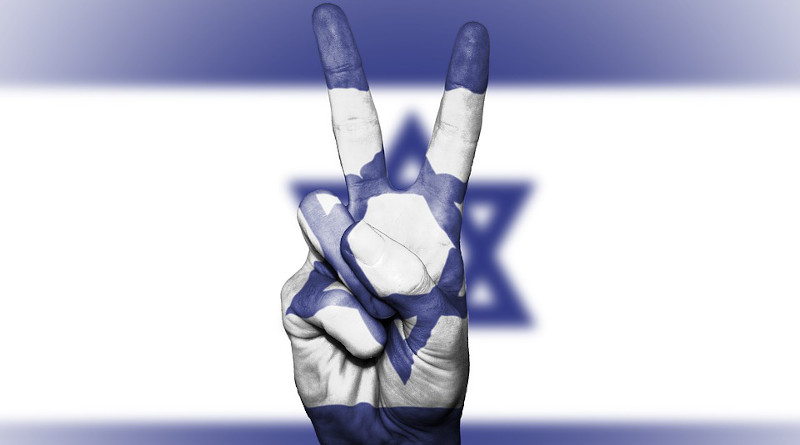Israel’s Failure To Pursue Peace May Provoke More Violence – OpEd
By Ray Hanania
The First Intifada — Palestinian civilian protests against Israeli brutality — began on Dec. 9, 1987, in the Jabalia refugee camp after an Israeli military vehicle collided with a civilian car, killing four Palestinian workers.
Although Israel denied that the killings were intentional — Israel’s government always denies it is responsible for any violence that takes civilian Palestinian lives — they occurred as Palestinians were protesting Israel’s oppressive policies throughout the Occupied Territories. The intifada created an opportunity for the Islamic Association, based in Gaza, to assert its leadership as it competed with the Palestine Liberation Organization, which was based abroad.
Ironically, the Islamic Association was originally funded by Israeli Prime Minister Yitzhak Shamir, the former terrorist leader, and his chief deputy Ariel Sharon, one of Israel’s most violent anti-Arab military leaders, to create a rival to compete with the PLO and its charismatic leader Yasser Arafat. This Israeli plan backfired and the Islamic Association launched Hamas, the extremist religious movement that later used suicide bombings to undermine the peace process. And it prompted Arafat and his confidants to make contact with the US to pursue a possible peace accord.
Despite the violence and deaths caused by Israel’s harsh response to Palestinian protests — provoking Palestinians to respond with violence of their own — the Oslo I Accord was signed by Arafat and then-Israeli Prime Minister Yitzhak Rabin at the White House on Sept. 13, 1993. I was there, along with dozens of other Palestinian American leaders, and was hopeful that the fundamentals of the Oslo Accords, which were never a complete peace plan, would result in two states — Israel and Palestine.
But while the Palestinian protests and violence against Israel’s military resulted in the peace plan, the peace plan resulted in Israeli violence, as Rabin was assassinated by a settler fanatic inspired by the right-wing, anti-peace rhetoric of Sharon and Benjamin Netanyahu. Rabin’s murder sent the Oslo Accords into a political hurricane they could not survive.
The Oslo Accords created a brief period of calm and encouraged contacts between the two sides. But Sharon, who became prime minister in the turmoil following Rabin’s death, provoked the Palestinians by visiting Al-Haram Al- Sharif, the site of Al-Aqsa Mosque and the Dome of the Rock, surrounded by hundreds of armed Israeli soldiers.
That act prompted Palestinians to protest and the Second Intifada was launched in September 2000. It continued until Israeli and Palestinian leaders again tried to reach a peace accord in February 2005 at Sharm El-Sheikh. This agreement was simple: Sharon would stop all violence against Palestinians and the Palestinians would agree to pursue the “roadmap for peace.”
However, it did not take long for Sharon to use the resulting calm to undermine the Palestinian leadership, attack targets in Gaza and the West Bank, strengthen Israel’s hold on East Jerusalem and expand the racist Jewish-only settlements on land in the West Bank taken from Palestinians.
Since then, peace has teetered on the edge of extinction, as Israel has consolidated its control of all the territories. In 2005, Israel withdrew its occupation forces from inside the Gaza Strip and repositioned heavily armed forces around its borders. Tel Aviv falsely claimed that the withdrawal gave Palestinians in Gaza freedom, but it actually turned the Strip into a harshly oppressed open-air prison. Israel turned Gaza into a shooting gallery, using long-distance missiles, fighter jets and occasional incursions to target and kill Palestinians.
Violence by Israel strengthened the country’s anti-peace, right-wing political leaders, who played on public emotions, citing the violence they created but blamed on Palestinians to discredit the peace process and fuel the expansion of illegal settlements.
In the meantime, Palestinians have tried to live in peace with Israel, although highly publicized attacks by militants — which have been greatly outnumbered by the less-publicized Israeli attacks on Palestinians and land confiscation — have resulted in a decade of uncertainty and death.
Many now believe that a third intifada is unfortunately needed to shatter Israel’s reticence to accept genuine peace based on fairness and two states.
The current situation, without a genuine desire for peace from the Israelis, is unsustainable for both sides. Palestinians know this, but they are under a tight and restrictive occupation that limits their ability to govern and control their own lives, not to mention control their own property and lands, which Israel continues to steal.
The ongoing failure by Israel, the dominant power in the Israeli-Palestinian relationship, to initiate a genuine peace effort could have consequences that reflect the violent lessons of the past.

